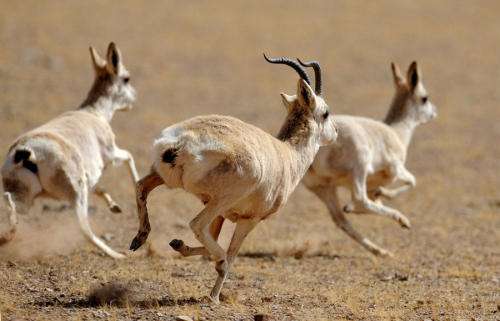(单词翻译:单击)
听力文本
Mongolian gazelle. Two million are thought to live here, but no one really knows.
蒙古瞪羚。共约两百万只瞪羚生活在此处,但具体数量仍不得知。
For much of the time, they're scattered through this vast landscape,
瞪羚在大部分时间里都各自流浪在这片广袤的大地上,
but once a year they come together to have their young.
然而,每年总有一次,这些它们将会聚集在一起,繁衍后代。
Nearly all will give birth within the next 10 days.
在接下来的十天之内,几乎所有的小家伙都会呱呱坠地。
0ut in the open, communal calving is the safest way to have young.
在毫无遮挡的草原上若想安全地繁衍,最佳方法是集体照看。
With so many pairs of eyes keeping watch, it's almost impossible for predators to sneak up.
有了这么多双警惕的眼睛,瞪羚们能够极其有效地防止自己遭到偷袭。

There are no bushes, no trees. There's only one thing to hide behind.
这里没有矮小的灌木,也没高大的乔木,只有一样东西可以藏身其后。
Grass. And it's not very effective.
草。草的掩护并不是非常有效。
Predators also have a hard time raising their young on open grassland.
掠食动物在这片空旷的草地上繁衍后代也并不轻松。
Without trees, eagles have to nest directly on the ground.
没有了树,鹰只能直接把巢安在地面上。
All the inhabitants of the Great Plains are exposed to the elements.
所有生活在草原上的动物都必须面对大自然残酷的一面。
视频及简介
剧组将镜头对准惊恐的蒙古小羚羊,亲眼目睹它们的季节迁徙的人其实很少。同时你不会错过第一次出现在摄影机镜头里的长相怪异的藏狐。历时六个星期,剧组为了跟踪一个企图捕杀大象的狮群,用夜视镜近距离地拍下了当时混战的场面。


